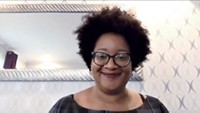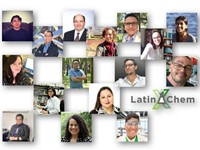Advertisement
Grab your lab coat. Let's get started
Welcome!
Welcome!
Create an account below to get 6 C&EN articles per month, receive newsletters and more - all free.
It seems this is your first time logging in online. Please enter the following information to continue.
As an ACS member you automatically get access to this site. All we need is few more details to create your reading experience.
Not you? Sign in with a different account.
Not you? Sign in with a different account.
ERROR 1
ERROR 1
ERROR 2
ERROR 2
ERROR 2
ERROR 2
ERROR 2
Password and Confirm password must match.
If you have an ACS member number, please enter it here so we can link this account to your membership. (optional)
ERROR 2
ACS values your privacy. By submitting your information, you are gaining access to C&EN and subscribing to our weekly newsletter. We use the information you provide to make your reading experience better, and we will never sell your data to third party members.
Careers
Organic Division Launches Graduate Research Symposium
by Amanda T. Yarnell
August 2, 2010
| A version of this story appeared in
Volume 88, Issue 31

Fifty-five rising stars in organic chemistry got the opportunity to present their graduate research at the ACS Division of Organic Chemistry’s inaugural Graduate Research Symposium in Boston last month.
“Graduate students rarely get the opportunity to participate in Gordon Conferences” in organic or medicinal chemistry, noted division chair-elect and meeting coorganizer Gary A. Molander of the University of Pennsylvania. He and fellow cochair P. Andrew Evans of the University of Liverpool, in England, thought it was important for the division to give its graduate students the chance to present their work in a similarly intimate forum, with ample time for scientific discussion and socializing. “It’s a great networking opportunity,” Evans said.
More than 100 fourth-year graduate students applied to attend the three-day symposium, which was held at Boston College on July 15–18 and featured roughly equal numbers of talks and posters. “It’s nice that the symposium organizers chose students from all areas of organic chemistry, from total synthesis to organic materials,” noted Aaron Finke, a graduate student in Jeffrey S. Moore’s group at the University of Illinois, Urbana-Champaign. Finke, who runs the popular chemistry blog “Carbon-Based Curiosities,” presented his efforts to use zinc to catalyze alkynylations, a reaction that he’s dubbed the “Sonogishi” reaction in homage to the classic Sonogashira and Negishi couplings that inspired it.
Those who were selected to attend told C&EN they were grateful for the opportunity to interact with their peers at other institutions. “It was good to meet other grad students from groups I’ve heard of,” said Devon A. Mundal, a graduate student in Regan J. Thomson’s lab at Northwestern University who is exploring the chemistry of N-allylhydrazones.
“We’re at a point where we want to find jobs—postdocs, industry jobs, academic jobs,” said Michael Krayer, a graduate student in Jonathan S. Lindsey’s lab at North Carolina State University. Krayer, who described his quest to make stable bacteriochlorin macrocycles for use in photodynamic therapy and artificial photosynthesis, has already started hunting for a postdoc position. “Networking is very important. This meeting gave me the opportunity to do that, and not only with senior professors or people from industry but also with other students.”
“It’s particularly important for this group to interact, since there’s a high probability that you will all end up in prominent positions,” Boston College chemistry professor Lawrence T. Scott told attendees.
Scott was one of a half-dozen or so established faculty members who, along with representatives from the National Institutes of Health and the American Chemical Society’s Publications Division, participated in a panel session on the life and work of academic chemists. Another session focused on careers in industry. Both featured lively discussion and advice on subjects such as choosing a postdoc position, landing a job, getting a grant, and long-term job prospects in the pharmaceutical industry.
Meanwhile, the symposium’s industrial sponsors got the opportunity to meet and evaluate the talent coming out of 36 different academic institutions across the country, making it an efficient and cost-effective recruiting venue, Molander told C&EN.
The symposium is a way for the division to deliver value to its graduate student members beyond the graduate student fellowships it gives out each year, Evans noted. Because industry support has become harder to come by, the number of fellowships the division made available to graduate students this year dropped to 10 from a peak of more than 20, he added. Therefore, he hopes the division’s Graduate Research Symposium will become an annual event. The next symposium will be held at the University of California, Santa Barbara, on July 14–17, 2011.





Join the conversation
Contact the reporter
Submit a Letter to the Editor for publication
Engage with us on Twitter